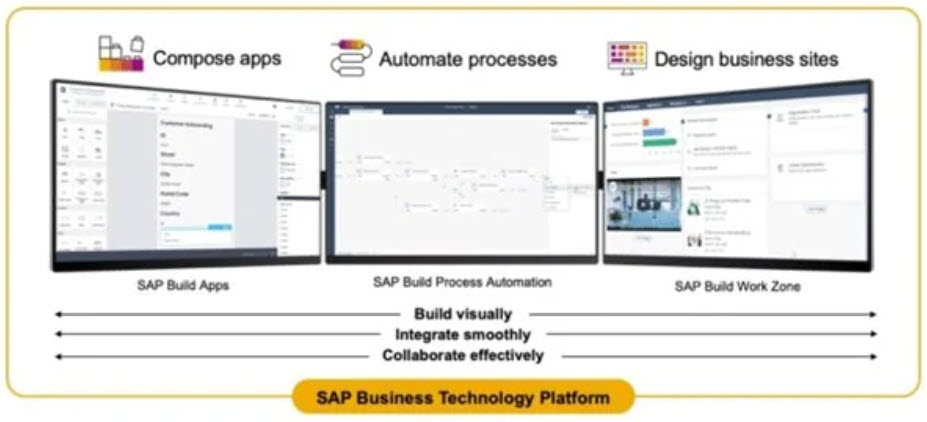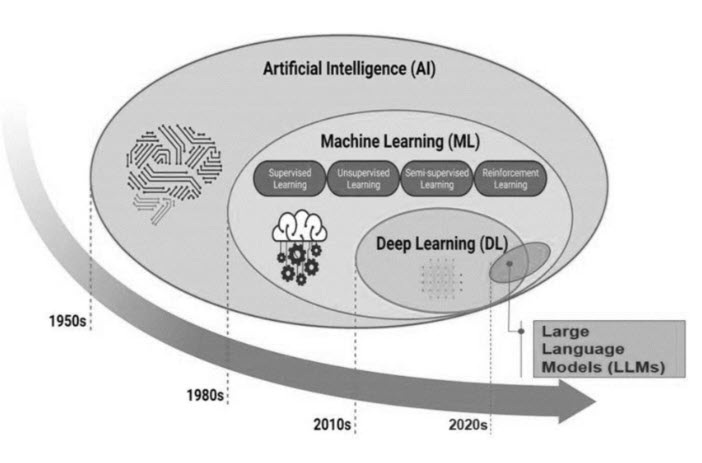 Anthony Cecchini is the President and CTO of Information Technology Partners (ITP), an ERP technology consulting company headquartered now in Virginia, with offices in Herndon. ITP offers comprehensive planning, resource allocation, implementation, upgrade, and training assistance to companies. Anthony has over 20 years of experience in SAP business process analysis and SAP systems integration. ITP is a Silver Partner with SAP, as well as an Appian, Pegasystems, and UIPath Low-code and RPA Value Added Service Partner. You can reach him at [email protected].
Anthony Cecchini is the President and CTO of Information Technology Partners (ITP), an ERP technology consulting company headquartered now in Virginia, with offices in Herndon. ITP offers comprehensive planning, resource allocation, implementation, upgrade, and training assistance to companies. Anthony has over 20 years of experience in SAP business process analysis and SAP systems integration. ITP is a Silver Partner with SAP, as well as an Appian, Pegasystems, and UIPath Low-code and RPA Value Added Service Partner. You can reach him at [email protected].
Generative AI has made significant strides over the past few years, evolving from theoretical research into practical applications that are now revolutionizing business processes. By incorporating AI-driven technologies into its solutions, Generative AI with SAP offers enterprises the ability to automate tasks, generate insights, and enhance decision-making in ways that were unimaginable just a few years ago.
How does SAP integrate generative AI into its platforms, and what value does it bring to modern enterprises? In SAP terms, seamlessly connecting generative AI to the existing functionalities of SAP S/4HANA adds an additional enterprise dimension to AI. This helps data to effortlessly flow between multiple business processes in an enterprise.
Now let’s look at generative AI in more depth.
Generative AI refers to systems that use advanced machine learning models, particularly large language models (LLMs), to generate new content based on the input they receive. This content can range from text and images to audio and video. Unlike traditional AI, which focuses on classification and prediction, generative AI has the ability to create entirely new content.
At the heart of generative AI are foundation ML models, which are neural networks trained on massive datasets. These models can process and analyze complex patterns, generating human-like responses to prompts. For example, OpenAI’s GPT-4 model boasts over 1.76 trillion parameters, making it one of the most powerful generative AI systems available.
Key Applications of Generative AI
Generative AI’s potential is vast and includes applications such as:
- Natural Language Processing (NLP): AI has advanced to a level where it can now generate coherent, human-like text, making it capable of engaging in natural conversations. Additionally, NLP models excel at summarizing complex documents, translating languages with high accuracy, and understanding context, all of which streamline communication and enhance productivity across diverse industries, from customer service to content creation.
- Content Creation: AI models are now capable of generating various forms of creative content, including images, videos, music, and more. These models analyze vast datasets of artistic works to replicate human styles and preferences, allowing businesses to automate creative processes. Whether generating marketing visuals or personalized music compositions, AI is transforming how content is developed and delivered.
- Code Generation: AI-driven code generation tools have transformed software development by enabling AI to write, optimize, and debug code autonomously. This dramatically accelerates the development process, reduces human error, and helps developers focus on more complex tasks. From simple scripts to entire software applications, AI now plays a critical role in advancing coding efficiency and productivity across industries.
- Automated Business Workflows: Generative AI systems excel at automating repetitive and time-consuming business processes, including data entry, report generation, and workflow management. By handling routine tasks with precision and speed, AI enables employees to focus on higher-level strategic initiatives. This automation drives productivity, reduces operational costs, and allows businesses to scale more efficiently without sacrificing quality.
SAP is well-positioned to capitalize on the transformative potential of generative AI. Through the integration of AI technologies into its solutions, SAP enables businesses to automate complex processes, enhance decision-making, and drive innovation. Here’s how SAP makes generative AI enterprise-ready.
SAP Business Technology Platform (SAP BTP)
SAP BTP is the foundation of SAP’s AI-driven solutions. It provides a flexible and scalable platform for businesses to develop and deploy AI models, ensuring that AI can be seamlessly integrated into existing workflows. One notable use case is the analysis of customer emails through NLP models, which allows businesses to automate customer service and gain deeper insights into customer sentiment .
SAP BTP also includes SAP HANA Cloud, which offers powerful data management and analytics capabilities. By leveraging SAP HANA Cloud’s vector engine, businesses can ground AI models in enterprise data, ensuring that the insights generated are relevant to the business context. This ensures that AI models are not only powerful but also accurate and trustworthy.
Generative AI Hub
The Generative AI Hub is another critical component of SAP’s generative AI ecosystem. This hub provides access to a range of foundation models, including those from Microsoft Azure OpenAI and Falcon 40B. The flexibility of the hub allows businesses to experiment with different models, ensuring they find the best fit for their needs. In the future, SAP plans to expand the hub to include additional models like Meta’s Llama 2 .
SAP Build Apps

SAP Build Apps is designed to help developers embed AI into their applications. Released in 2022, this tool provides developers with access to a wide range of AI models, making it easier to integrate AI into business processes. With a focus on security and governance, SAP Build Apps ensures that AI models are both robust and compliant with enterprise standards .
Joule: SAP’s AI Copilot

One of SAP’s most innovative AI tools is Joule, an AI copilot designed to assist businesses with real-time insights and predictions. Joule can be integrated across SAP’s portfolio of solutions, including cloud ERP and human capital management systems. By providing advanced AI-driven recommendations and automating routine tasks, Joule helps businesses operate more efficiently and make better decisions .
The incorporation of generative AI into SAP solutions brings numerous benefits to enterprises:
- Automation and Efficiency
Generative AI can automate a wide range of tasks, from data entry to report generation. This reduces the need for manual labor and allows employees to focus on higher-value tasks. For instance, SAP’s AI solutions can automatically generate financial reports, freeing up time for finance teams to focus on strategic planning.
- Enhanced Decision-Making
Generative AI is particularly valuable in its ability to analyze vast amounts of data and generate insights in real-time. This enables businesses to make more informed decisions. For example, AI models can analyze market trends and predict future demand, helping businesses optimize their inventory and supply chain management.
- Personalization
Generative AI can be used to personalize customer experiences at scale. By analyzing customer data, AI models can generate personalized product recommendations, marketing messages, and even pricing strategies. This not only improves customer satisfaction but also drives revenue growth.
- Improved Customer Service
AI-driven chatbots and virtual assistants powered by generative AI can handle customer inquiries 24/7, providing instant support. These systems can understand and respond to complex queries, helping businesses improve their customer service while reducing operational costs .
- Innovation
Generative AI opens up new possibilities for innovation. For example, businesses can use AI to generate new product designs, create marketing campaigns, or even develop entirely new business models. This enables businesses to stay ahead of the competition and continuously innovate.
Despite its immense potential, generative AI also comes with challenges that businesses must address to ensure its successful implementation.
- Data Privacy and Security
One of the primary concerns with generative AI is data privacy and security. AI models are often trained on large datasets that may include sensitive information. Ensuring that AI systems are compliant with data privacy regulations, such as GDPR, is critical to preventing data breaches and protecting customer privacy .
- Model Reliability and Accuracy
Generative AI models, particularly LLMs, are probabilistic in nature, meaning they can sometimes generate incorrect or misleading information. This is known as “AI hallucination.” To mitigate this risk, businesses must ensure that AI models are properly fine-tuned and that their outputs are continuously monitored for accuracy .
- Integration and Scalability
Integrating generative AI into existing business systems can be complex, particularly for large enterprises with legacy infrastructure. Businesses must ensure that AI models can scale effectively to handle large volumes of data and users without compromising performance .
- Ethical Considerations
|Generative AI also raises important ethical questions, particularly around the use of AI-generated content. For example, AI-generated text and images could be used to spread misinformation or infringe on intellectual property rights. Businesses must establish clear ethical guidelines for the use of generative AI to prevent these issues .
Building Responsible AI with SAP
SAP has taken a proactive approach to address the challenges of generative AI by building responsible AI systems that prioritize ethics, transparency, and governance. The following strategies are key to SAP’s approach:
- AI Ethics and Governance
SAP ensures that AI models are built with ethical considerations in mind from the outset. This includes involving human oversight throughout the development process to ensure that AI models align with business goals and societal values.
- Continuous Monitoring and Feedback
SAP’s AI solutions include mechanisms for continuous monitoring and feedback. This allows businesses to track the performance of AI models and make adjustments as needed to ensure they remain effective and reliable.
- Red Teaming and Testing
Before deploying AI models into production, SAP uses “red teaming” techniques to test the models under a variety of conditions. This helps identify potential vulnerabilities and ensures that the models can perform as expected in real-world scenarios .
Summary
As generative AI continues to evolve, its applications within SAP are likely to expand even further. Businesses can expect to see new AI-driven solutions that enhance every aspect of their operations, from finance and supply chain management to marketing and customer service. In the near future, we can expect to see even more powerful AI systems that can handle more complex tasks and provide even deeper insights. For example, SAP is exploring the integration of AI models that can predict and prevent supply chain disruptions, helping businesses minimize risk and maximize efficiency.






